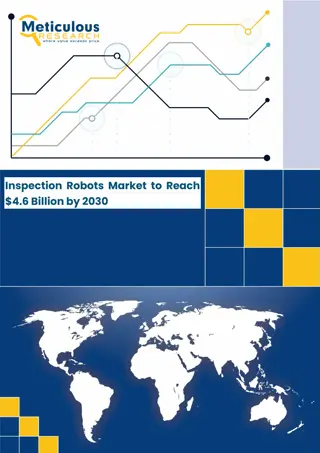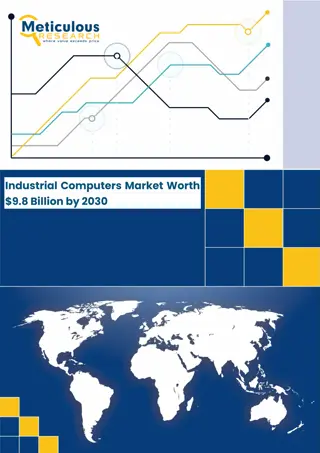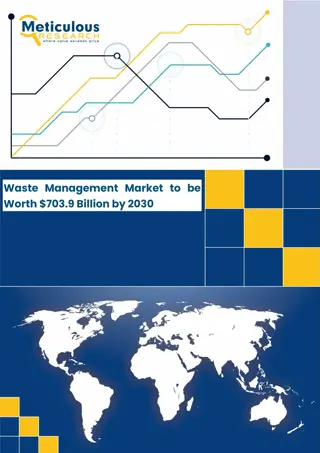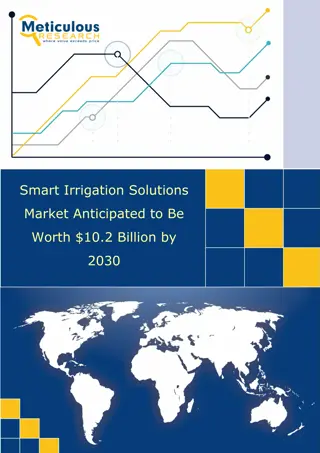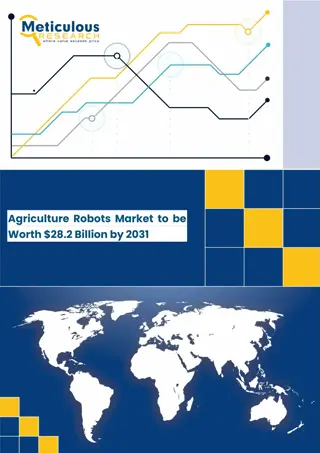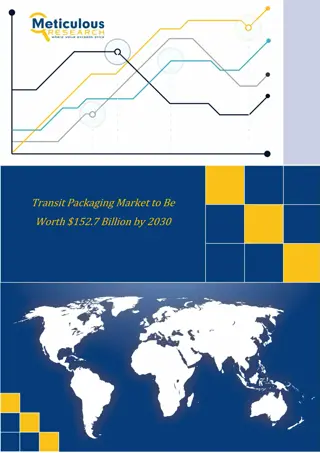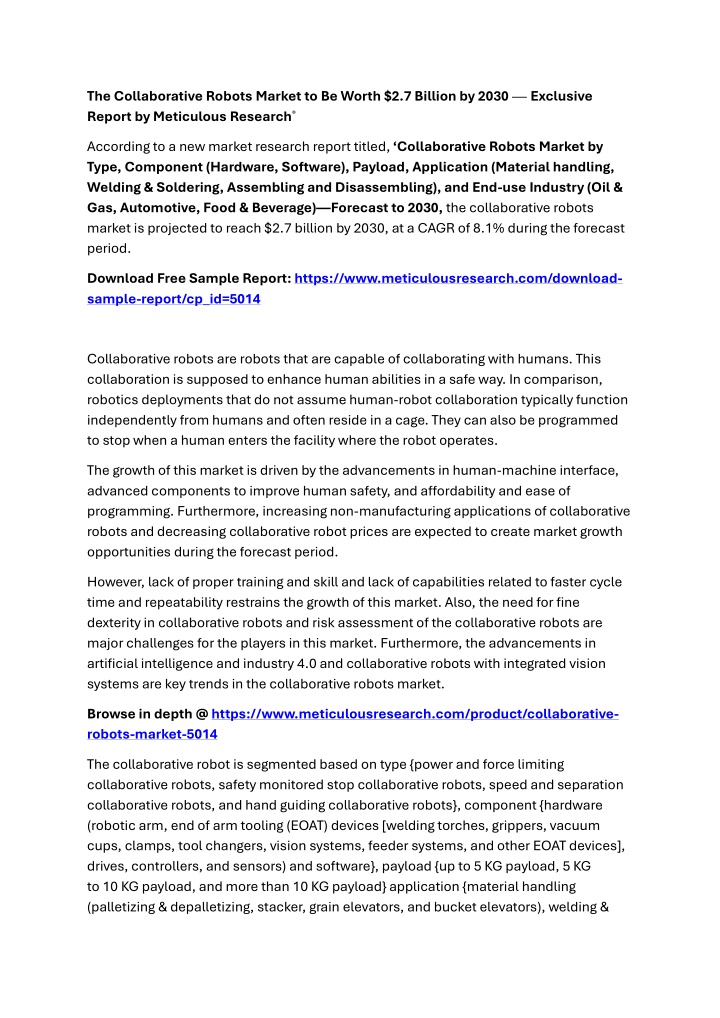
The Collaborative Robots Market to Be Worth $2.7 Billion by 2030
According to a new market research report titled, u2018Collaborative Robots Market by Type, Component (Hardware, Software), Payload, Application (Material handling, Welding & Soldering, Assembling and Disassembling), and End-use Industry (Oil & Gas, Automotive, Food & Beverage)u2014Forecast to 2030, the collaborative robots market is projected to reach $2.7 billion by 2030, at a CAGR of 8.1% during the forecast period.
Download Presentation

Please find below an Image/Link to download the presentation.
The content on the website is provided AS IS for your information and personal use only. It may not be sold, licensed, or shared on other websites without obtaining consent from the author. If you encounter any issues during the download, it is possible that the publisher has removed the file from their server.
You are allowed to download the files provided on this website for personal or commercial use, subject to the condition that they are used lawfully. All files are the property of their respective owners.
The content on the website is provided AS IS for your information and personal use only. It may not be sold, licensed, or shared on other websites without obtaining consent from the author.
E N D
Presentation Transcript
The Collaborative Robots Market to Be Worth $2.7 Billion by 2030 Exclusive Report by Meticulous Research According to a new market research report titled, Collaborative Robots Market by Type, Component (Hardware,Software), Payload,Application (Material handling, Welding & Soldering,Assembling and Disassembling), and End-use Industry (Oil & Gas, Automotive, Food & Beverage) Forecast to 2030, the collaborative robots market is projected to reach $2.7 billion by 2030, at a CAGR of 8.1% during the forecast period. Download Free Sample Report: https://www.meticulousresearch.com/download- sample-report/cp_id=5014 Collaborative robots are robots that are capable of collaborating with humans. This collaboration is supposed to enhance human abilities in a safe way. In comparison, robotics deployments that do not assume human-robot collaboration typically function independently from humans and often reside in a cage. They can also be programmed to stop when a human enters the facility where the robot operates. The growth of this market is driven by the advancements in human-machine interface, advanced components to improve human safety, and affordability and ease of programming. Furthermore, increasing non-manufacturing applications of collaborative robots and decreasing collaborative robot prices are expected to create market growth opportunities during the forecast period. However, lack of proper training and skill and lack of capabilities related to faster cycle time and repeatability restrains the growth of this market. Also, the need for fine dexterity in collaborative robots and risk assessment of the collaborative robots are major challenges for the players in this market. Furthermore, the advancements in artificial intelligence and industry 4.0 and collaborative robots with integrated vision systems are key trends in the collaborative robots market. Browse in depth @ https://www.meticulousresearch.com/product/collaborative- robots-market-5014 The collaborative robot is segmented based on type {power and force limiting collaborative robots, safety monitored stop collaborative robots, speed and separation collaborative robots, and hand guiding collaborative robots}, component {hardware (robotic arm, end of arm tooling (EOAT) devices [welding torches, grippers, vacuum cups, clamps, tool changers, vision systems, feeder systems, and other EOAT devices], drives, controllers, and sensors) and software}, payload {up to5KG payload, 5KG to10KG payload, and more than10KG payload} application {material handling (palletizing & depalletizing, stacker, grain elevators, and bucket elevators), welding &
soldering (resistance spot welding, arc welding, laser welding, plasma welding, ultrasonic welding, and other welding applications), assembling and disassembling, machine tending (grinding, drilling, milling and turning, injection molding, and other applications), dispensing, processing, inspection (laser inspection, dimensional checks, vision systems, flow tests, and leak tests), and other applications}, end-use industry {automotive and transportation, electrical & electronics, metal & machinery, plastic & chemicals, oil & gas, food & beverage, aerospace & defense, biotechnology, healthcare, and other end-use industries}, and geography. Based on type, the collaborative robots market is segmented into power and force limiting collaborative robots, safety monitored stop collaborative robots, speed and separation collaborative robots, and hand guiding collaborative robots. In 2023, the speed and separation collaborative robots segment is expected to account for the largest share of the collaborative robots market. Request to Sample Report : https://www.meticulousresearch.com/request- sample-report/cp_id=5014 Based on component, the collaborative robots market is segmented into hardware and software. The hardware segment is sub-segmented into robotic arm, end of arm tooling (EOAT) devices, drives, controllers, and sensors. The end of arm tooling (EOAT) devices segment is sub-segmented into welding torches, grippers, vacuum cups, clamps, tool changers, vision systems, feeder systems, and other EOAT devices Based on payload, the collaborative robots market is segmented into up to5KG payload, 5KG to10KG payload, and more than10KG payload. In 2023, the 5 KG to 10 KG payload segment is expected to account for the largest share of the collaborative robots market. Based on application, the collaborative robots market is segmented into material handling, welding & soldering, assembling and disassembling, machine tending, dispensing, processing, inspection, and other applications. In 2023, the material handling segment is expected to account for the largest share of the collaborative robots market. Quick Buy @ https://www.meticulousresearch.com/Checkout/62547706 Based on end-use industry, the collaborative robots market is segmented into automotive and transportation, electrical & electronics, metal & machinery, plastic & chemicals, oil & gas, food & beverage, aerospace & defense, biotechnology, healthcare, and other end-use industries. In 2023, the automotive and transportation segment is expected to account for the largest share of the collaborative robots market.
Based on geography, the collaborative robots market is segmented into Asia-Pacific, Europe, North America, Latin America, and the Middle East & Africa. In 2023, Asia- Pacific is expected to account for the largest share of the Collaborative Robots Market, followed by Europe, North America, Latin America, and the Middle East & Africa. Key Players: The key players operating in the collaborative robots market are Universal Robots A/S (Denmark), Rethink Robots GmbH (Germany), ABB Ltd (Switzerland), Fanuc Corporation (Japan), KUKA AG (Germany), Yaskawa Electric Corporation (Japan), Kawasaki Heavy Industries, Ltd.(Japan), Robert Bosch Manufacturing Solutions GmbH(Germany) Contact Us: Meticulous Research Email-sales@meticulousresearch.com Contact Sales- +1-646-781-8004 Connect with us on LinkedIn-https://www.linkedin.com/company/meticulous- research

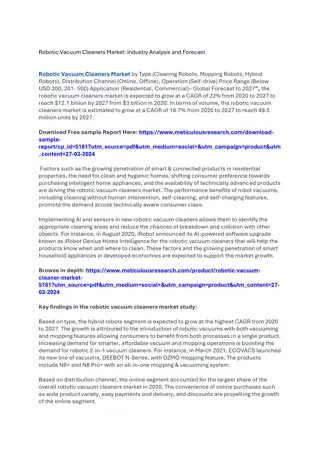

![Global Medical Robots Market Research Analysis & Forecast [2024-2034]](/thumb/86013/global-medical-robots-market-research-analysis-forecast-2024-2034.jpg)



